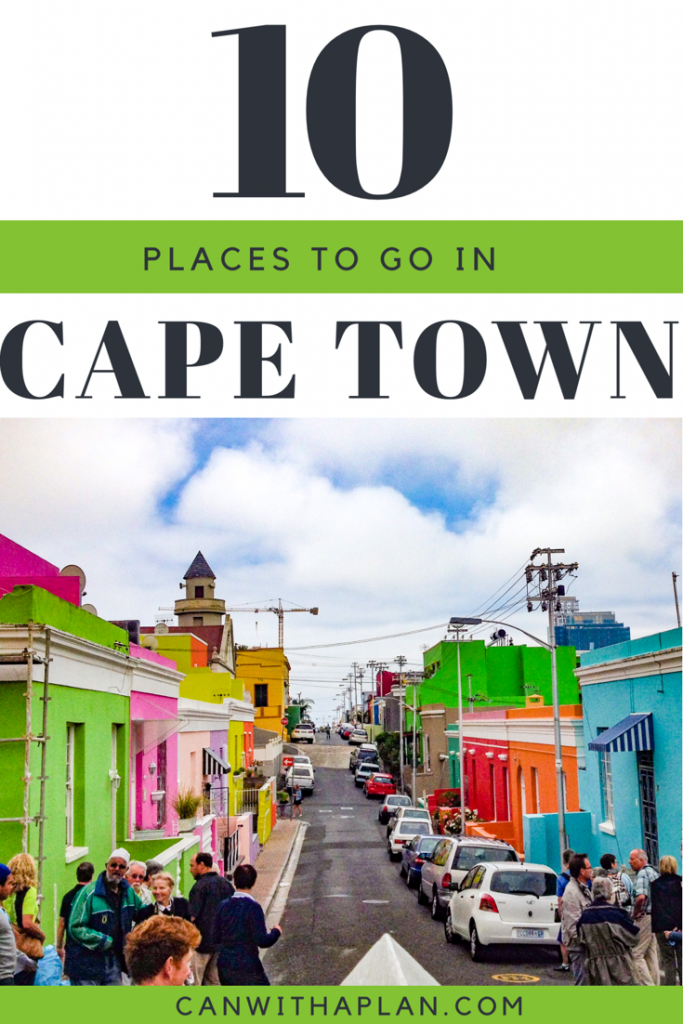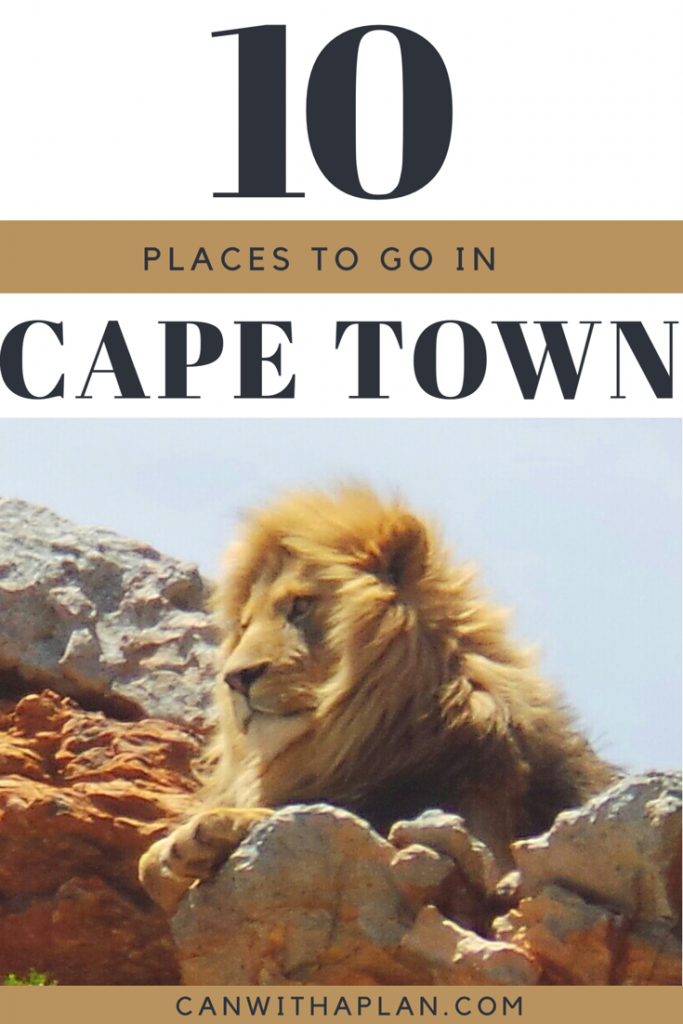Cape Town is the oldest city in South Africa and one of the most beautiful cities in the world. It offers a wide range of experiences and is a great destination for first-time visitors to Africa. I spent just over a week there in 2013 and have been dying to go back ever since.
1. Boulders Beach
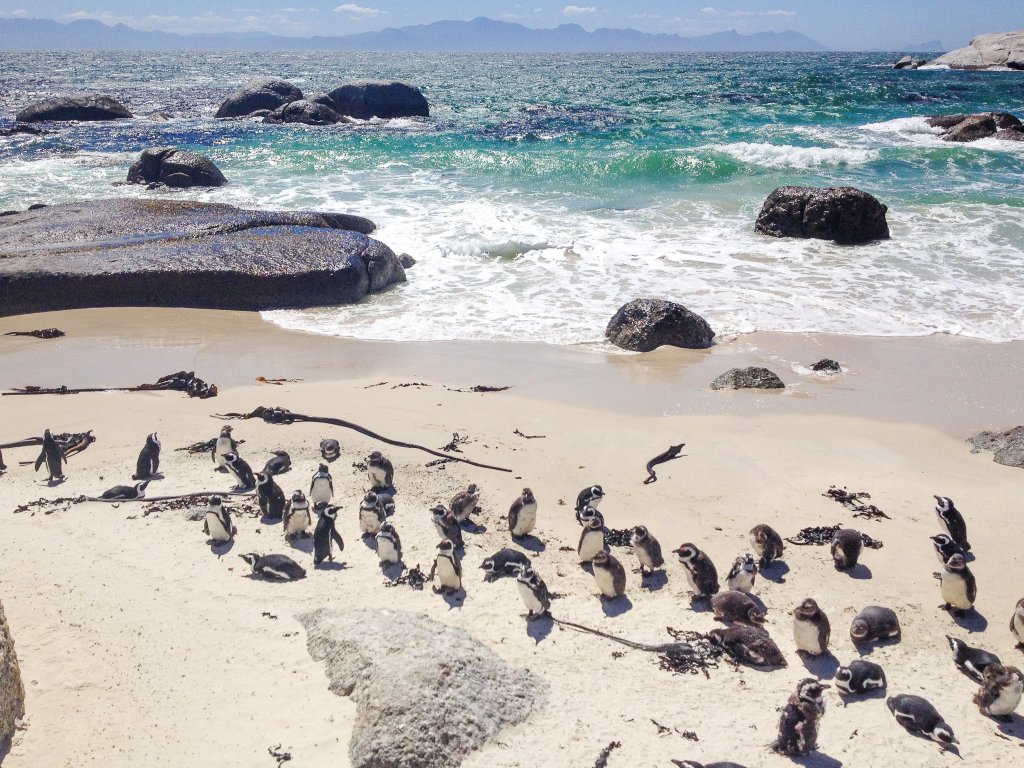
The African penguin is only found along the coast of South Africa and Namibia. Over the course of the 20th century, the species nearly went extinct as overfishing reduced its food supply, guano scraping destroyed its nests, and harvesting of penguin eggs was not banned until 1967. Most of the penguins live on small islands just off the coast, as their small size and slow walk make them easy targets for predators on the mainland. In 1983, however, a pair of penguins from a nearby island settled on Boulders Beach, which is made up of small inlets sheltered from the wind and waves by large, granite boulders. Over the years, through breeding and attracting more penguins from the islands, the colony has grown to around 3000 penguins.
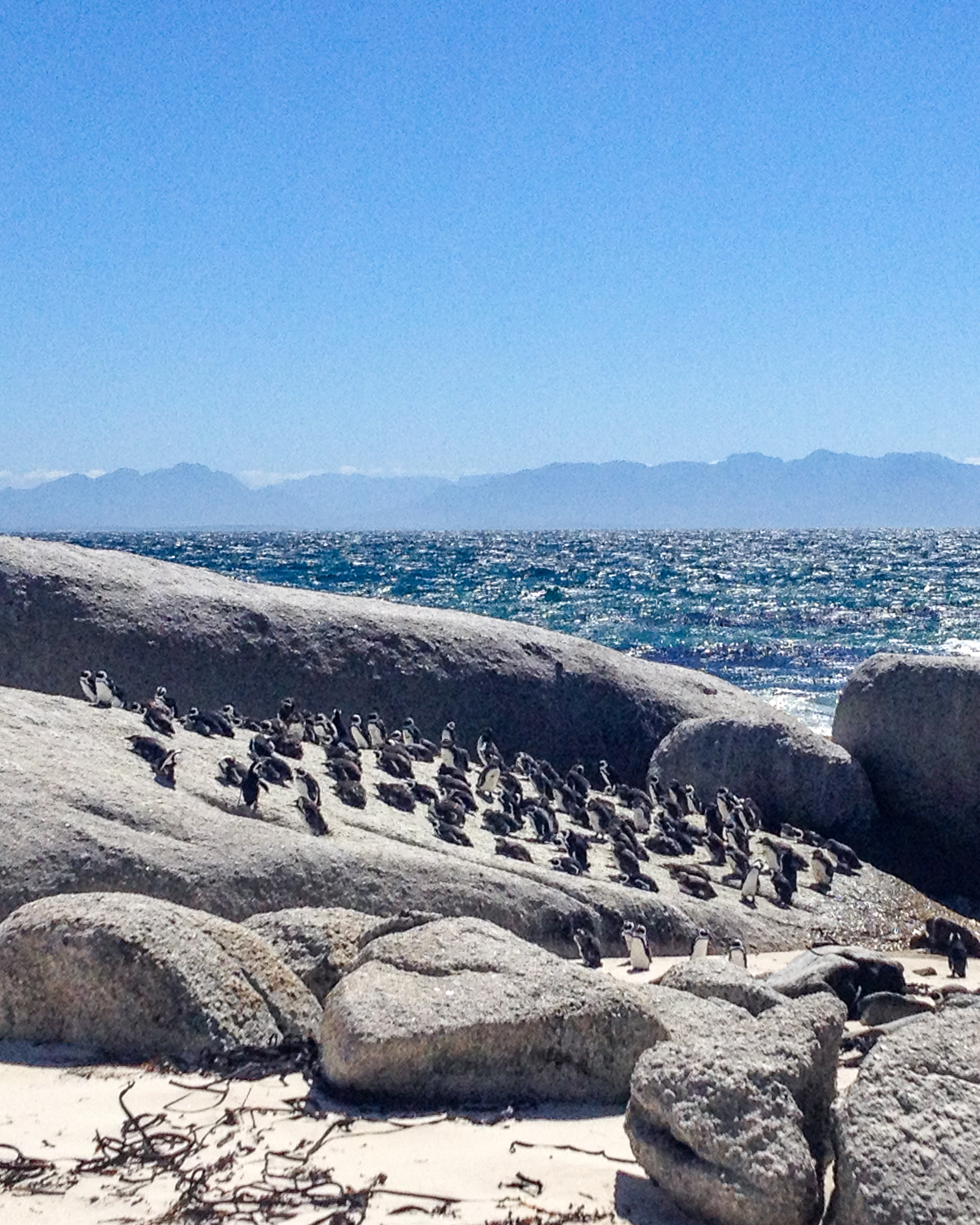
The beach is about a 40 minute drive from the center of Cape Town. There is a small entrance fee that goes to support conservation efforts. You can see the penguins year-round, but most of them will be out at sea feeding during September and October. Breeding season occurs between March and May. African penguins are monogamous and mate for life, and the male and female both incubate the eggs for around 40 days. The main breeding colony is on Foxy Beach, where there is a wooden deck that allows visitors to view the penguins without disturbing their space. If you want to get on the beach and swim with penguins, walk a few minutes down the wooden boardwalk that connects to Boulders Beach.
2. Table Mountain

Table Mountain’s flat top has become an iconic symbol of Cape Town. The 2.5 hour hike to the summit is a great way to enjoy the outdoors and get a panoramic view of the city below. There is also a cable car that will take you to the top.

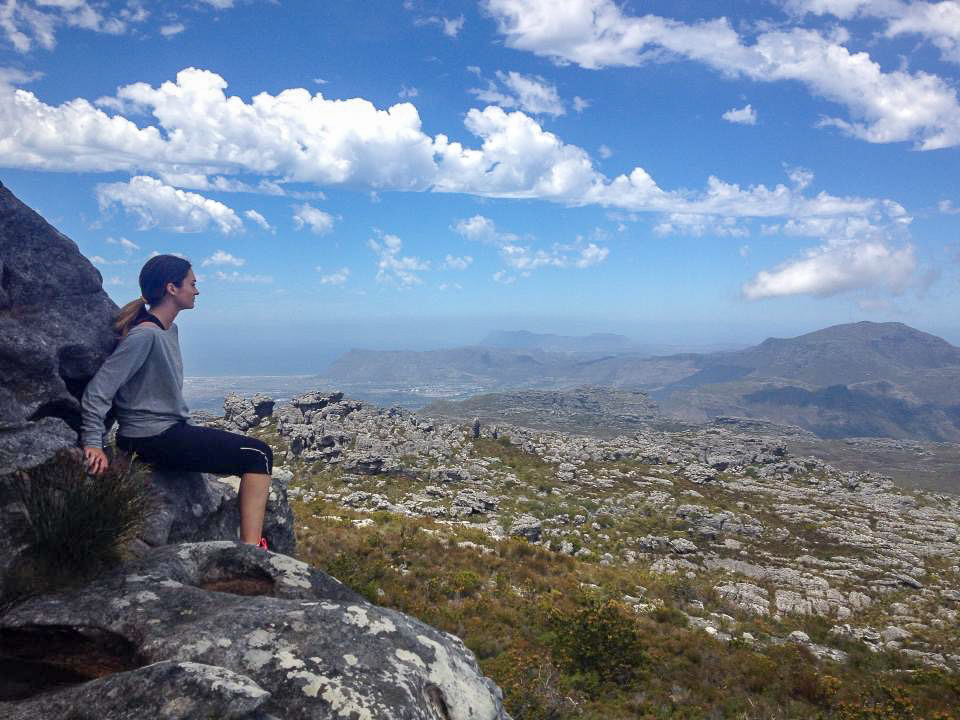
3. Groot Constantia

Groot Constantia is South Africa’s oldest wine-producing estate. They offer wine tastings as well as cellar and vineyard tours. My favorite wine is Pinotage, a red wine grape that was created in South Africa in 1925 as a cross between Pinot Noir and Cinsaut (formerly known as Hermitage).

4. Aquila Private Game Reserve
The bigger safaris are in the northern part of South Africa and worth going to if you have a few extra days. If you’re short on time, you can still see the Big 5 game animals (lion, leopard, rhinoceros, elephant, and African buffalo – considered to be the 5 most difficult animals to hunt on foot) and more on a day trip to Aquila.
Lion
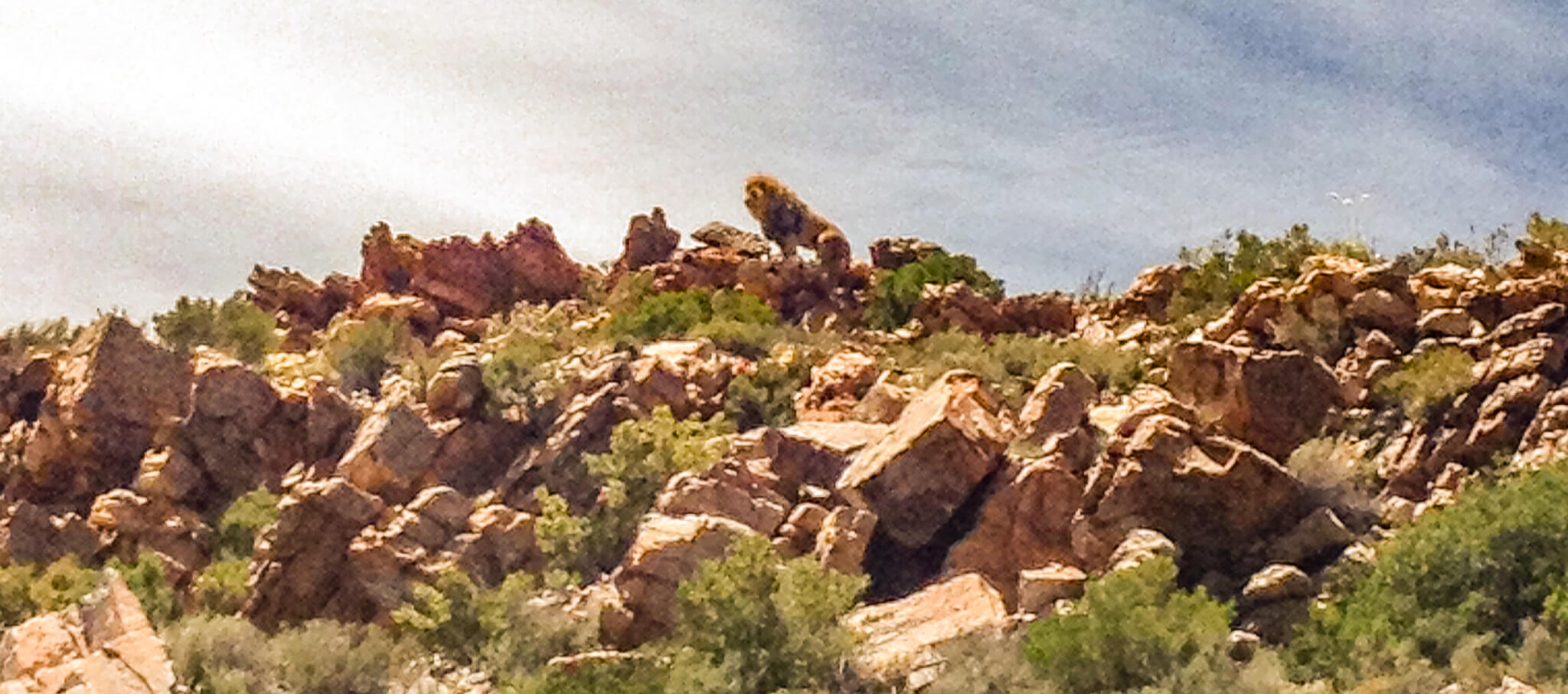
The most exciting part of the day was when we first spotted the lion as he stood up and peered over the edge of the mountain.
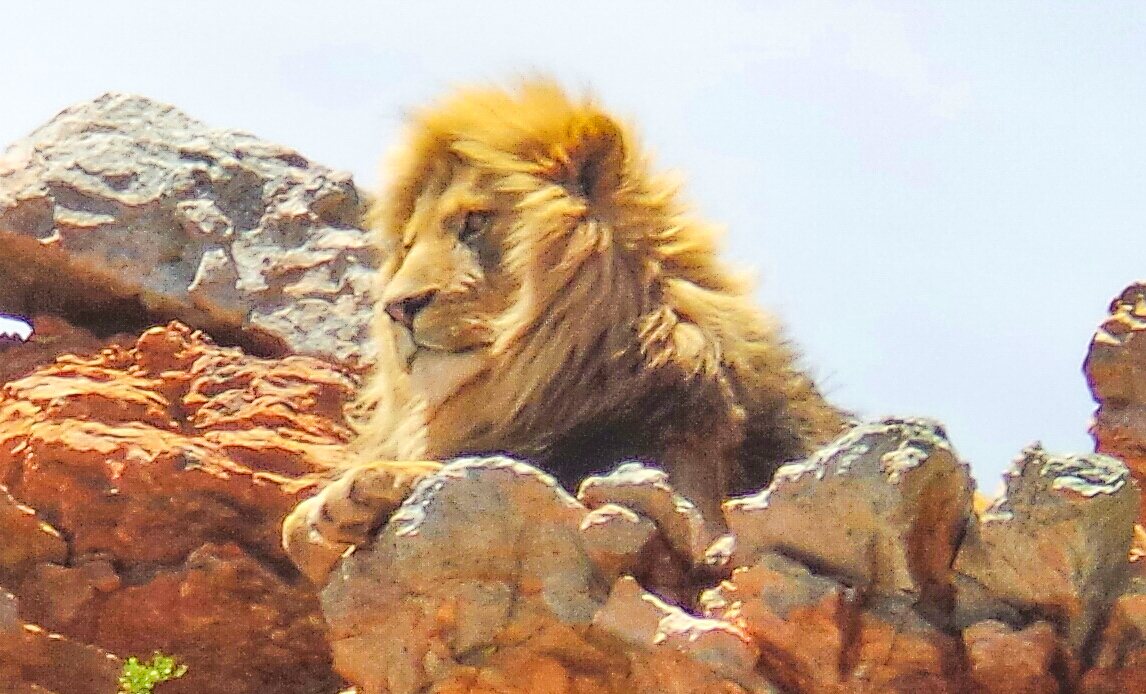
Then the lioness came out of her lair.
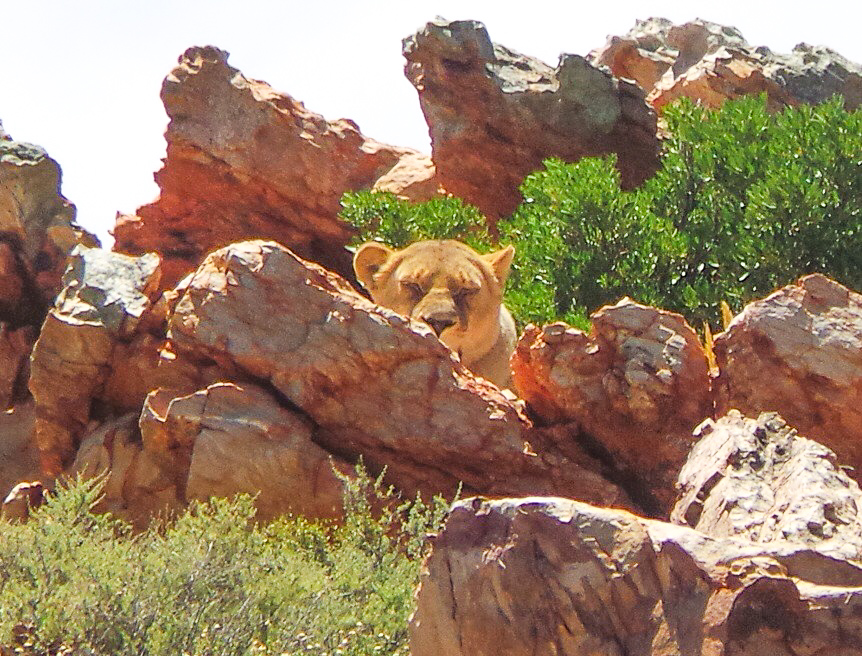
Leopard

We did not see any leopards running free, but there was a rescue leopard that had been saved from a canned hunting operation. It was raised in captivity and could not survive on its own in the wild.
Rhino

Aquila is home to the white rhino, which has a squared lip and grazes on grasses. Adult rhinos have no natural predators, but are vulnerable to poachers when they stop to drink at water holes.
African Buffalo

The African buffalo has large mustache-shaped horns on its head that it uses to defend itself from predators.
Elephant

The elephant is Africa’s largest, and friendliest, land mammal. The population declined drastically over the last century as elephants were hunted for their tusks, and they are still threatened by poachers.
Springbok

The springbok is a medium-sized antelope found mainly in southern and southwestern Africa. Lions, leopards, and cheetahs are its major predators. The springbok can run fast and makes a series of vertical leaps, called pronking, when frightened or excited which is believed to serve as a distraction to its predators.
Zebra

Each zebra has its own unique stripe pattern. The stripes are typically vertical on the head, neck, and main body, and horizontal on the rear and legs.
Hippo

While it may look like all hippos do is eat and lounge around, don’t let their appearance fool you. They are actually the deadliest land animal in Africa, responsible for more human deaths than any of the Big 5. Male hippos attack when their territory is threatened, while female hippos typically attack to protect their offspring. They can run at speeds between 20-30 mph and have large, sharp teeth and strong jaws.
5. Clifton Beach

Clifton is an affluent residential area with the most expensive real estate in Cape Town. Homes built on the cliffside have spectacular ocean views, and Clifton’s four beaches are frequented by both locals and tourists.
6. Bo-Kaap
Most of the residents of Bo-Kaap are Muslims, descended from slaves that the Dutch brought over from Malaysia, Indonesia, and other African nations. It is believed that the liberated slaves painted their homes in bright colors as a celebration of their freedom after slavery was abolished in 1834 and they were finally allowed to own property. The neighborhood is now a top tourist attraction and has experienced gentrification as many wealthy outsiders have started buying homes in the community,
7. Camps Bay

The beachfront restaurants in Camps Bay are the perfect place to unwind at the end of the day and watch the sunset.
8. V&A Waterfront
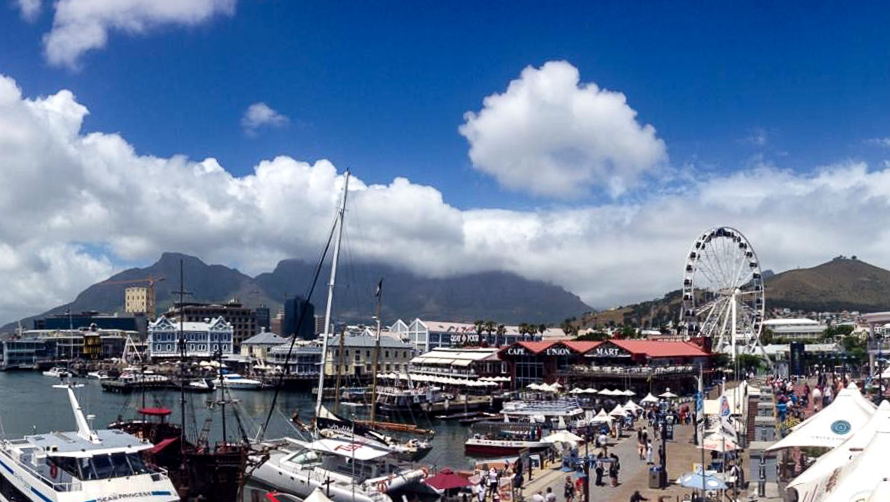
The V&A Waterfront offers many options for shopping, eating, and boat tours. It is also home to the Cape Wheel, an enclosed, 40 meter-high observation wheel offering 360-degree views of Cape Town.

9. Two Oceans Aquarium
Two Oceans Aquarium is named for its location, near the meeting point of the Indian and Atlantic Ocean. It has many exhibits showcasing the diversity of marine life found in these two oceans.



10. Robben Island



Nelson Mandela spent 18 years in Robben Island Prison. The prison was closed in 1991, and you can now tour the island and see Mandela’s cell.
Like this post? Pin it!







